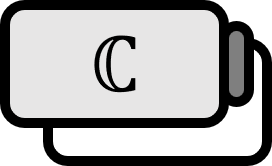Analytic Continuation
Definition 1
For an analytic function $f_{1}: \mathscr{R}_{1} \to \mathbb{C}$ if there exists an analytic function $f_{2}: \mathscr{R}_{2} \to \mathbb{C}$ in $\mathscr{R}_{2} \subset \mathbb{C}$ that satisfies $$ \mathscr{S} := \mathscr{R}_{1} \cap \mathscr{R}_{2} \ne \emptyset \\ f_{1} (z) = f_{2} (z) \qquad , z \in \mathscr{S} $$ then $f_{2}$ is called the Analytic Continuation of $\mathscr{R}_{2}$ in $f_{1}$.
Explanation
Although this article is written in a complicated manner, if we read the definition carefully, it essentially means that in a certain complex domain $\mathscr{S}$, $f_{2}$ is simply an analytic function that can perfectly replace $f_{1}$. It is often called analytic extension because in many cases, we consider $\mathscr{R}_{1} \subset \mathscr{R}_{2}$.
The generalization of functions defined in the real numbers to the complex plane is like finding $f_{\mathbb{C}}$ defined in $\mathscr{R}_{2} = \mathbb{C}$ by properly generalizing the function $f_{\mathbb{R}}$ we originally knew in $\mathscr{R}_{1} = \mathbb{R}$. The most straightforward examples include exponential functions $\exp ( \cdot )$, gamma functions $\Gamma ( \cdot )$, and Riemann zeta functions $\zeta (\cdot)$.
Osborne (1999). Complex variables and their applications: p361. ↩︎
